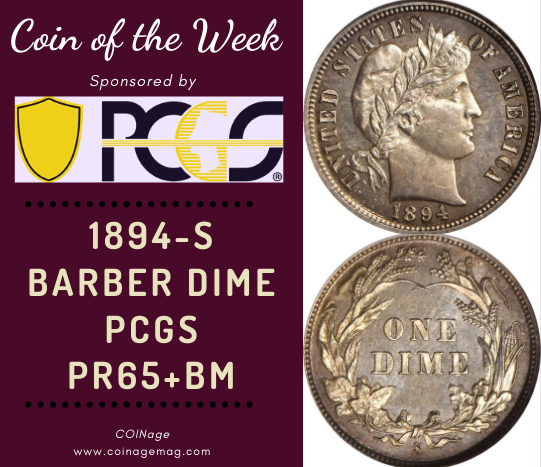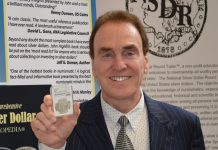
The 1894-S Barber dime is one the rarest and most iconic of United States coins, a trophy piece that turns heads upon exchanging hands at public auction. And, when it does cross the auction block, it usually does so for north of a cool million. That was certainly the case when a specimen of the ultra-rare 1894-S Barber dime recently realized $1,440,000 at a Stack’s Bowers Galleries auction. Only 24 were made and just nine are accounted for today.
The coin, which was housed in an alternative grading company’s holder before being submitted to Professional Coin Grading Service by the winning bidder, grades PCGS PR65+BM; the “BM” is an acronym that refers to the coin being a Branch Mint proof. In 1894, it was customary for proof coins to be struck at the Philadelphia Mint, not the branch mint in San Francisco, as was the origin for the 1894-S Barber dime. So, why were the 1894-S proof Barber dimes made?
More than five quarter centuries on, there is still little solid answer behind the origin story of the 1894-S Barber dimes. One of the most widely accepted — though unproven — theories is that San Francisco Mint Superintendent John Daggett had the 24 dimes produced to reconcile an accounting shortfall of $2.40 in the mint’s ledgers. He then proceeded to give many of these 24 dimes to friends and close associates. He also presented three to his daughter, Hallie.
Upon selling an 1894-S Barber dime decades later, she said as a young girl she had spent one of the three 1894-S dimes on a dish of ice cream. Whether or not this is true will probably never be known, but it does make for a cute story — one that lends to some intrigue when one of the circulated specimens of this great American rarity crosses the block!














